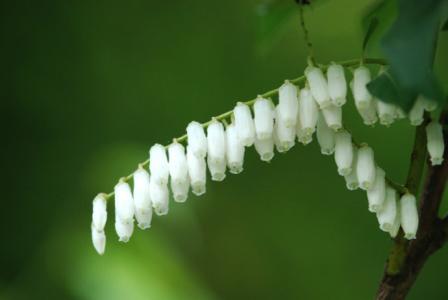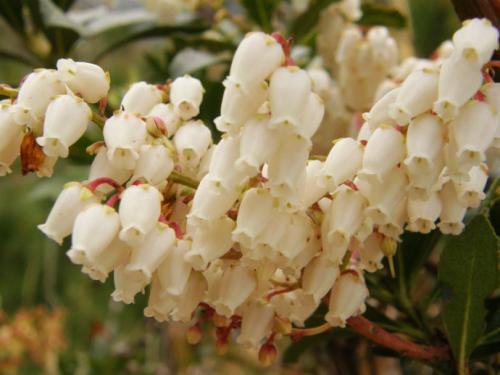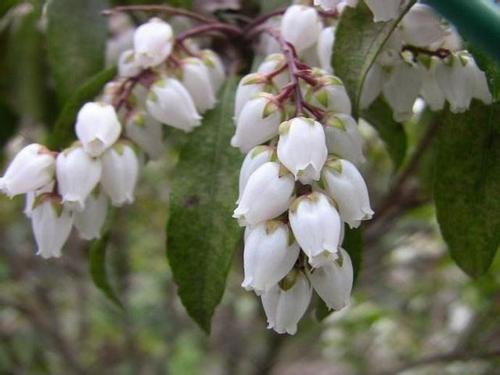The planting method of Majiu wood
The first method-- sowing and reproduction
The sowing time is generally in the spring and autumn, the seeds should be healthy without any diseases, so that the germination rate can be improved, and the sowing temperature should be controlled at about 18 degrees, which is conducive to rooting and sprouting.
The second method-cutting propagation
The most commonly used method of propagation is cutting propagation. First of all, the appropriate branches should be selected, then the branches should be cut off and dried for a few days, and then after the wound has healed, the branches will be inserted into the prepared soil, and then the soil will be kept moist. Finally, just wait for the tree to take root.

The cultivation of colored-leaf horse drunkenwood is the most popular courtyard color-leaf tree species in Europe, America and Japan, which can observe both leaves and flowers, which meets the requirements of new and excellent varieties in garden application in our country, and has great market potential.
Euphorbia angustifolia is the cultivated variety or variety of Japanese Pieris japonica and the hybrid between Ericaceae and Taiwan. it belongs to Azaleaceae and belongs to evergreen broad-leaved shrubs or trees. The varieties introduced in China can be divided into two series: leaf viewing and flower viewing. According to the leaf color, the Guanye series can be divided into three series: red leaves, flower leaves and green leaves. The flower series can be divided into two series: safflower and white flower. In the blooming season, the safflower series is colorful and colorful; the white flower series is like a cloud waterfall, fresh and elegant.
The bark of the colored-leaf horse drunken wood is gray or brown, with longitudinal and scaly lines. The leaf surface of the leaf is leathery and flexible, mostly alternate, lanceolate to oblanceolate, or long oval, serrated, and the tender shoots are often red, bronze, copper, orange or yellow. The leaf color of most of the cultivated varieties changes with different growth periods, and the same plant will have red, pink, bright yellow, green and other leaves at the same time, which is of great ornamental value. The flower posture of the colored leaf horse drunken wood has a unique charm, and the white florets are born on racemes or panicles, like hanging bells. Inflorescences fruiting or axillary, erect or pendulous. The flowers are white, sometimes pink and fragrant. From February to May, the calyx is yellowish green or yellowish brown, sometimes light red.
Majiu likes humid climate and semi-shade environment, and can also grow in full light; it likes acidic, fertile, moist and permeable soil; its habitat requirements are similar to those of rhododendron, but it is more hardy. Most of the introduced in China are Japanese mahogany, and some of them are hybrids of Japanese mahogany and Taiwan mahogany. All hybrids and cultivated varieties are extremely cold-tolerant, some varieties can survive the winter in the open field at low temperature in the north, and deciduous leaves in winter in the cold area, which is suitable for planting in the vast area south of Beijing. Lax environmental requirements, easy to cultivate, resistant to pruning and strong sprouting ability.
Colored-leaf horse drunk wood is used in flower hedges, color block puzzles, lower vegetation configuration and edge shrubs in gardens, which is more colorful than rhododendron and other flower shrubs, and has ornamental value all year round. The first function of Horse drunken Wood-- ornamental value
Because the leaf shape of Majiu wood is more beautiful, the flowers are gorgeous, and the flowers are rich, so it has high ornamental value, and it is often used as a garden green plant and as a potted plant placed on the balcony or as a courtyard plant for viewing.
The second function-- medicinal value
The leaves of horse drunken wood contain toxins, so don't eat it by mistake, but it has been processed and can be used to treat scabies and as an insecticide, so it is a good medicinal plant for external use.
These are the role of horse drunken wood, do you suddenly feel that planting horse drunken wood is also very good? So what are the planting methods of horse drunken wood? The following will be introduced in detail by the editor!
- Prev

Maintenance methods and matters needing attention of Majiu wood
The first thing to note-soil Ma drunk wood likes loose soil and good drainage soil, such soil is suitable for the growth of horse drunken wood, you can also choose the soil made of garden soil and sand. The second thing to pay attention to-- Fertilizer, the drunken wood needs enough fertilizer when it grows.
- Next

Is the indoor culture of Majiu wood poisonous?
After the verification of the relevant data, the horse drunken wood is toxic, that is to say, the horse drunk wood is poisonous, and the whole grass is poisonous. Accidental eating of animals will produce symptoms of vomiting and abdominal pain, and in serious cases, it will also lead to coma, breathing difficulties and other problems. Although the whole grass is poisonous
Related
- Fuxing push coffee new agricultural production and marketing class: lack of small-scale processing plants
- Jujube rice field leisure farm deep ploughing Yilan for five years to create a space for organic food and play
- Nongyu Farm-A trial of organic papaya for brave women with advanced technology
- Four points for attention in the prevention and control of diseases and insect pests of edible fungi
- How to add nutrient solution to Edible Fungi
- Is there any good way to control edible fungus mites?
- Open Inoculation Technology of Edible Fungi
- Is there any clever way to use fertilizer for edible fungus in winter?
- What agents are used to kill the pathogens of edible fungi in the mushroom shed?
- Rapid drying of Edible Fungi

